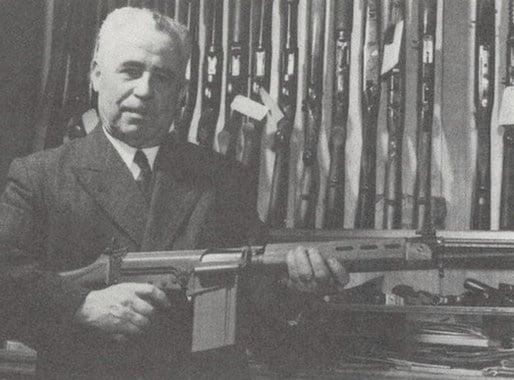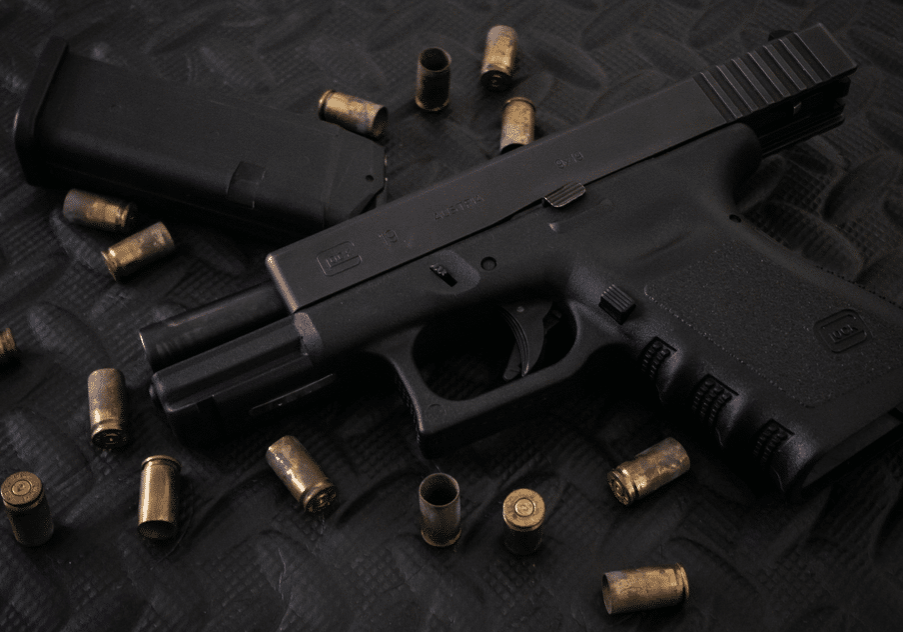Pros and Cons of Single Stack vs Double Stack Pistols
“Single stack” and “double stack” are terms used to describe the way in which ammunition is fit into a magazine. Single stack magazines layer rounds in a single vertical row, while double stack magazines hold two vertically staggered rows packed tightly next to each other. Double stack guns, therefore, have the advantage of holding more ammunition. Single stacks carry less ammunition, but are obviously less wide, which makes them generally lighter, thinner, and more easily concealed.
Comparisons between single and double stack are most often made within the context of choosing an ideal concealed carry weapon. A smaller single stack firearm has historically been the most popular choice for concealed carriers. However, double stacks are becoming increasingly popular for those who value the extra ammo capacity. Choosing between the two often comes down to personal preference. The following article will outline additional factors to consider when making your decision. But first, a little background on the double stack.
In this guide, we'll cover:
- Background of the Double Stack
- Single or Double Stack for Concealed Carry
- Pros and Cons of Single Stack vs Double Stack
- A Great Compromise Between the Two

While the single stack magazine has long served as the traditional model for pistols worldwide, the modernized double stack or double-row magazine is less than a century old. Development of the double stack pistol began in 1921, when the French military requested firearm manufacturer Fabrique Nationale (FN) create a new semi-automatic 9mm pistol with an upgraded 15-round magazine. FN’s chief weapons designer John Browning is said to have initially declined the request of the French military under the opinion that traditional single stack magazines capable of holding seven or eight rounds were sufficient.

Val Browning
The project would later be passed on to Browning’s assistant, Dieudonné Joseph Saive, who drew out the initial design for a double stacked magazine. The magazine was first implemented onto a modified FN Model 1903 for testing. Browning would later apply the design in two 9mm pistol designs using locked and unlocked breaches. Browning, in partnership with Colt’s Patent Firearms Manufacturing Co., filed the locked-breech version of the pistol with the US Patent and Trademark Office in 1923. The patent was granted on February 22, 1927, four months after Browning’s death.
Colt then opted to put Brownings double stack pistol on the backburner in order to concentrate on manufacturing its popular Model 1911. Browning’s son Val later picked up the double stack project himself, partnering with FN to develop a 13-round FN Browning Model 1922, aka the Grand Rendement. After the patents on the Model 1911 expired, Saive returned to redesign the Grand Rendement to incorporate the best features from both pistols, creating the FN Model 1928.
Saive’s double stack magazine design has become a staple in the pistol market, with double stack carry guns such as the Glock 19 and 26, the Smith & Wesson M&P, and the FNS 9c now being considered some of the best choices available for concealed carry.

Dieudonné Joseph Saive
Police reports indicate that most defensive shooting scenarios take place at close range, with very few shots typically being fired. Therefore, in typical self-defense scenarios it is unlikely that an extra 6 to 10 rounds will be necessary.
That said, there are numerous accounts of police officers or CCWs emptying entire magazines at close range. The reality is that it is impossible to predict whether or not extra rounds might be necessary in the event of an emergency.
Single stack pistols like the M&P Shield, the Glock 43, and the Walther PPK are among the most popular options for concealed carry, in part due to the 1 inch or less frame width. However, adding a quarter inch of width and a couple ounces of weight for additional ammunition might be preferable for some.
Body Type and Attire
There are some circumstances in which the choice between a single or double stack firearm might already be partially made for you, particularly as it pertains to your body type and the clothing you wear.
Smaller men and most women will almost always be better served opting for a single stack firearm, as double stacks are too bulky to easily conceal on their persons.
Hand size also matters. The wider frame of a double stack might make a single stack the best option for reasons of comfort for smaller sized individuals. Particularly in a self-defense scenario, in which a massive amount of adrenaline is being released, you don’t want to be reaching for a firearm that isn’t easy to handle.
If you have a smaller body type and still want the extra rounds, be sure to put plenty of time in at the range becoming used to the wider frame of a double stack. Alternatively, you can opt to carry a single stack firearm and keep an extra magazine or two with you.
Another factor to consider is clothing. In colder climates which require you to wear layers of heavy clothing, a double stack carry can be a great choice. It’s very unlikely when wearing a jacket or a thick coat that even the most bulky double stack will make any kind of noticeable outline or ‘print’ in your clothing. However, someone preferring a double stack might opt for a single stack carry if they are going out in shorts and a t-shirt during warmer months.
Single Stack
Pros
- Historically popular choice for concealed carry.
- Lightweight and more easily concealable (particularly when wearing light clothing).
- Ideal for smaller sized men and most women.
- In most cases easier to handle for individuals with smaller hands.
Cons
- Smaller magazines, capable of holding no more than 7 or 8 rounds.
Check out our picks for the Best Single Stack 9mm Pistols
Double Stack
Pros
- Higher capacity magazines capable of holding double-digit rounds.
- Larger individuals or those wearing layered clothing can potentially conceal a double stack just as well as a single stack.
Cons
- Added size can make concealment more of a challenge for smaller individuals or those wearing light clothing.
- Additional weight and thickness can potentially be less comfortable for all-day carrying.
- Added size can make overall handling and accuracy more difficult for those with small hands.

$499.99 at Brownells
Prices accurate at time of publishing
The SIG Sauer P365 offers the best of both worlds for concealed carry holders. Despite being a double stack pistol with 10- and 12-round magazines, it's as thin as most single stack pistols on the market at just 1 inch wide. This makes it thinner than the Glock 43, and within 0.05 inches of other single stack pistols including the Springfield XDS and the M&P Shield.
Aside from its incredible capacity for such a small handgun, it also offers a great stock trigger, front/rear slide serrations, and night sights.
Check out the table below for a comparison of the size and capacity of these pistols.
*Prices accurate at time of publishing.
The Key
With so many variables at play when choosing between a single or double stack pistol for concealed carry, the optimal choice is simply this: choose the gun that works best for YOU. The only way to determine the ideal gun for you is to try several models and experience the differences first hand. Time at the range will ultimately provide you with all the information you need to make your choice. Find a weapon that fits your body type, that’s comfortable to carry, and most importantly, that you’re accurate with.








